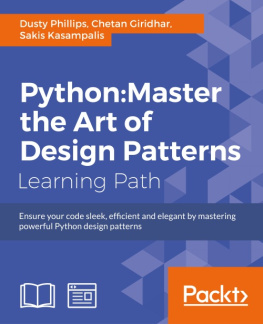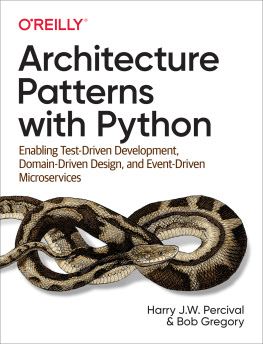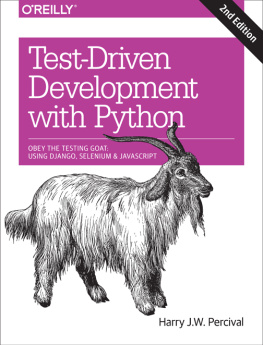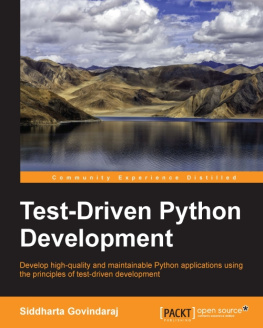Harry Percival - Architecture Patterns with Python: Enabling Test-Driven Development, Domain-Driven Design, and Event-Driven Microservices
Here you can read online Harry Percival - Architecture Patterns with Python: Enabling Test-Driven Development, Domain-Driven Design, and Event-Driven Microservices full text of the book (entire story) in english for free. Download pdf and epub, get meaning, cover and reviews about this ebook. year: 2020, publisher: OReilly Media, genre: Home and family. Description of the work, (preface) as well as reviews are available. Best literature library LitArk.com created for fans of good reading and offers a wide selection of genres:
Romance novel
Science fiction
Adventure
Detective
Science
History
Home and family
Prose
Art
Politics
Computer
Non-fiction
Religion
Business
Children
Humor
Choose a favorite category and find really read worthwhile books. Enjoy immersion in the world of imagination, feel the emotions of the characters or learn something new for yourself, make an fascinating discovery.
- Book:Architecture Patterns with Python: Enabling Test-Driven Development, Domain-Driven Design, and Event-Driven Microservices
- Author:
- Publisher:OReilly Media
- Genre:
- Year:2020
- Rating:3 / 5
- Favourites:Add to favourites
- Your mark:
Architecture Patterns with Python: Enabling Test-Driven Development, Domain-Driven Design, and Event-Driven Microservices: summary, description and annotation
We offer to read an annotation, description, summary or preface (depends on what the author of the book "Architecture Patterns with Python: Enabling Test-Driven Development, Domain-Driven Design, and Event-Driven Microservices" wrote himself). If you haven't found the necessary information about the book — write in the comments, we will try to find it.
As Python continues to grow in popularity, projects are becoming larger and more complex. Many Python developers are taking an interest in high-level software design patterns such as hexagonal/clean architecture, event-driven architecture, and the strategic patterns prescribed by domain-driven design (DDD). But translating those patterns into Python isnt always straightforward.
With this hands-on guide, Harry Percival and Bob Gregory from MADE.com introduce proven architectural design patterns to help Python developers manage application complexityand get the most value out of their test suites.
Each pattern is illustrated with concrete examples in beautiful, idiomatic Python, avoiding some of the verbosity of Java and C# syntax. Patterns include:
- Dependency inversion and its links to ports and adapters (hexagonal/clean architecture)
- Domain-driven designs distinction between Entities, Value Objects, and Aggregates
- Repository and Unit of Work patterns for persistent storage
- Events, commands, and the message bus
- Command-query responsibility segregation (CQRS)
- Event-driven architecture and reactive microservices
Harry Percival: author's other books
Who wrote Architecture Patterns with Python: Enabling Test-Driven Development, Domain-Driven Design, and Event-Driven Microservices? Find out the surname, the name of the author of the book and a list of all author's works by series.

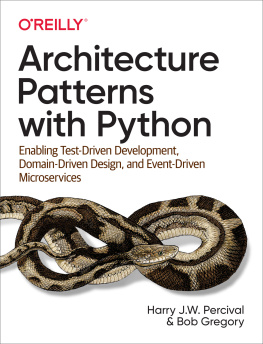
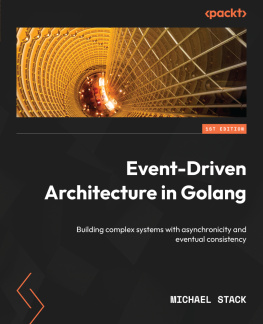
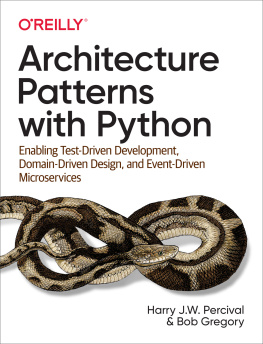

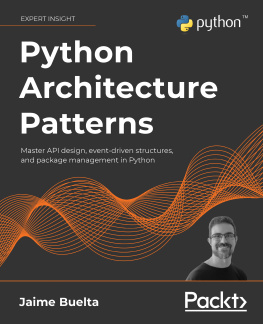
![Percival - Test-driven web development with Python: [obey the testing goat: using Django, Selenium, and JavaScript]](/uploads/posts/book/248536/thumbs/percival-test-driven-web-development-with-python.jpg)
